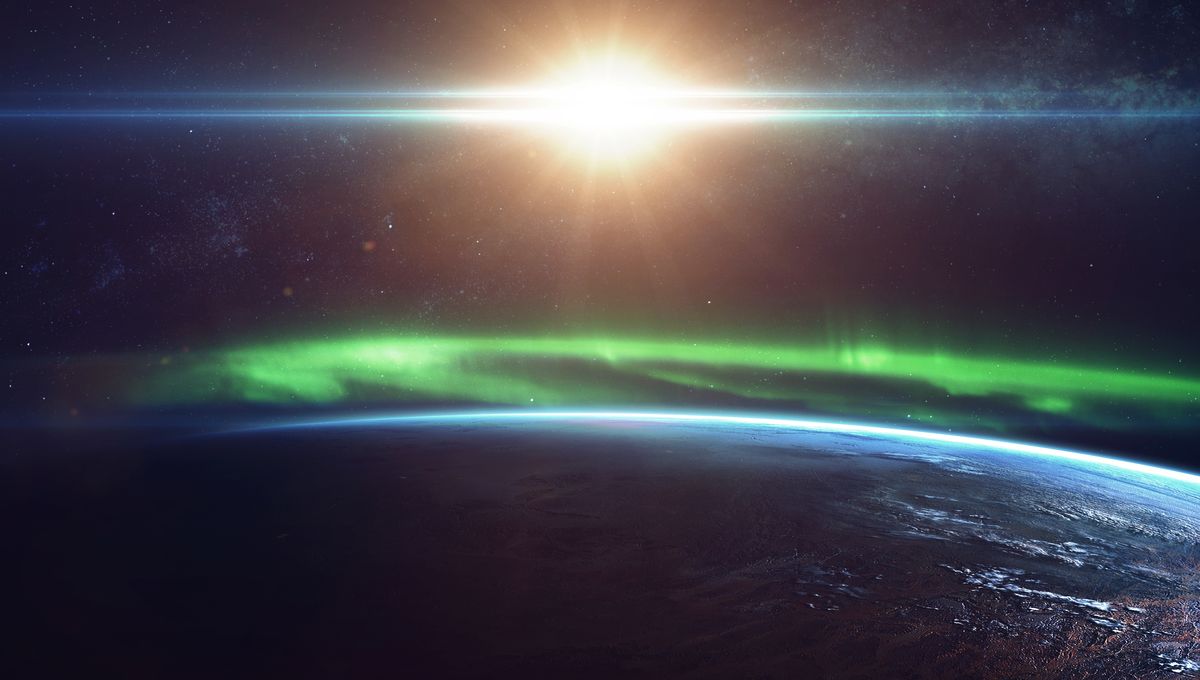
High in the upper atmosphere, from the edge of space to well within it, there is the ionosphere. Atoms and molecules there are missing electrons, so they are electrically charged. They are influenced by what is happening nearer to the surface but also by the Sun. New observations suggest that there is more understanding to be had, following the discovery of new structures.
The work was possible thanks to NASA’s Global-scale Observations of the Limb and Disk (GOLD) mission. It found that there are some peculiar formations in the ionosphere shaped like letters: X and C. These are connected to the previously known phenomena of crests and bubbles in the ionosphere, places where there is more plasma than others.
The X-shaped structures had been observed before, believed to be the merging of crests caused by intense activity either from a powerful volcanic eruption or from an increase in the solar wind – the stream of charged particles from the Sun – following solar flares or coronal mass ejections. GOLD has shown here that X-shaped formations can also happen during quiet periods.
“Earlier reports of merging were only during geomagnetically disturbed conditions — it is an unexpected feature during geomagnetic quiet conditions,” lead author Fazlul Laskar, from the University of Colorado’s Laboratory for Atmospheric and Space Physics (LASP), said in a statement.
The presence of X-shaped formations in quiet periods implies something else is at work. Computer models suggest it could be that churning in the lower atmosphere can actually pull down some of the plasma, leading to the merging of the crests into an X shape even when there are no major disturbances.
“The X is odd because it implies that there are far more localized driving factors,” explained Jeffrey Klenzing, a scientist at NASA’s Goddard Space Flight Center. “This is expected during the extreme events, but seeing it during ‘quiet time’ suggests that the lower atmosphere activity is significantly driving the ionospheric structure.”
Similarly to the crests, the bubble also ends up in the shape of a letter. These bubbles are generally thin and long, following the magnetic lines of the planet. But some bubbles become curved into a C or reverse C shape. The process is believed to be linked to terrestrial wind, even though the ionosphere extends from 80 kilometers to 640 kilometers (50 to 400 miles) above ground.
Among the oddities, the team found plasma bubbles that were incredibly close together, in the range of several hundred kilometers. This suggests that there is significant turbulence in the ionosphere – it is far from calm.
“Within that close proximity, these two opposite-shaped plasma bubbles had never been thought of, never been imaged,” said lead author of the work on the C-shaped formations, Deepak Karan, also at LASP.
“The fact that we have very different shapes of bubbles this close together tells us that the dynamics of the atmosphere is more complex than we expected,” Klenzing added.
Both papers were published in the Journal of Geophysical Research: Space Physics and can be found here and here.
Source Link: Strange Letter-Shaped Structures Found In The Electrified Layers Of Earth’s Atmosphere